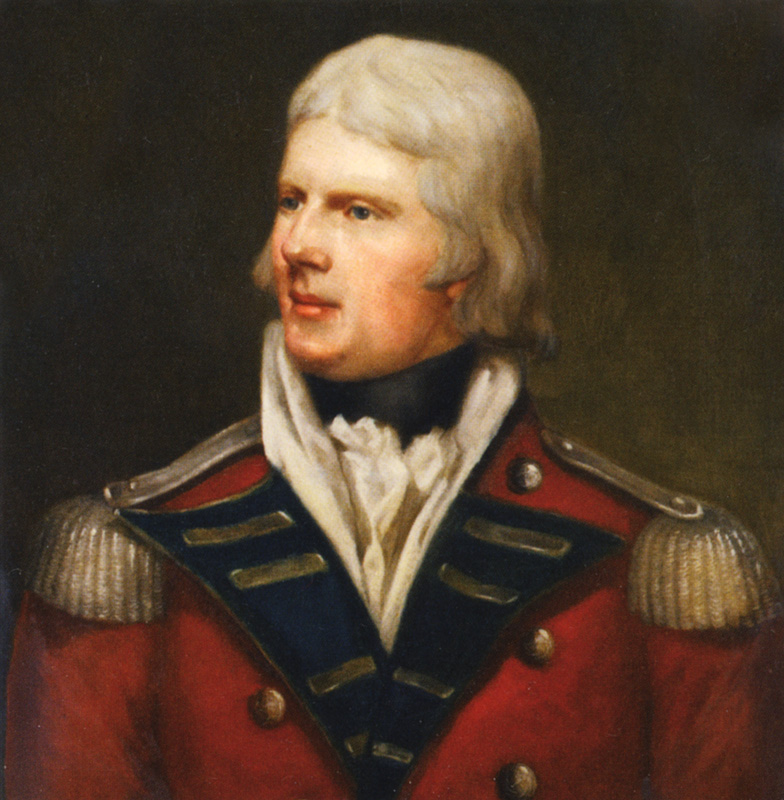24th Chief, 8th Baronet of Morvern, 20th Laird of Duart, 4th Lord Maclean*
General Sir Fitzroy Jeffreys Grafton Maclean, 8th Baronet of Morvern,1 4th Lord Maclean* became the 24th Chief of the Clan Maclean1 on the 2nd of November in 18182 upon the death of his elder half-brother, who died without issue.3
Sir Fitzroy never imagined that he might one day inherit the chiefship of his clan; rather his life was devoted to the military service of his country. The government of the islands of St. Thomas and St. John were entrusted to him by the Crown until a treaty returned them to Denmark.1 Sir Fitzroy rose to the rank of general in the British Army; with over 50 years2 of military service, Sir Fitzroy never formally retired. He was appointed the Colonel of the 84th and later 45th Regiments of Foot.
Sir Fitzroy was a man of standing, politically connected,3 a trusted agent of the Crown,1 and a Freemason.4 His children followed his example in military and governmental service. Though a life abroad never allowed him to return to the home of his ancestors he imparted to his son, Charles, a passion for the history of his clan.
Service
1787 Ensign, British Army, 29th Regiment of Foot5
1788 Lieutenant, British Army, 29th Regiment of Foot6
Lieutenant, British Army, 60th Regiment of Foot7
1793 Captain, British Army, 60th Regiment of Foot8
1795 Major, British Army, 110th Regiment of Foot9
Major, British Army, 79th Regiment of Foot10
Lt. Colonel, British Army, 82nd Regiment of Foot11
1801 Lt. Colonel, British Army, 60th Regiment of Foot12
1803 Colonel, British Army, 37th Regiment of Foot13
1805 Brigadier, British Army, 37th Regiment of Foot14
Commanding Leeward Caribbean Islands
1810 Maj. General, British Army, 37th Regiment of Foot15
1814 Lt. General, British Army16
1837 General, British Army17
Family
Sir Fitzroy was born in 177018 to Donald Maclean, esq. and Margaret Wall.3 Margaret, Donald’s second wife,2 was the daughter of James Wall, esq.3 of Clonea Castle in Waterford.2 James Wall, Sir Fitzroy’s maternal grandfather, was a Secretary to the King of Spain.3
In 1794, Sir Fitzroy married Elizabeth Kidd,20 the only daughter of Charles Kidd2 and widow of John Bishop, esq. of Barbados.3 Elizabeth’s first marriage produced no children. Though Sir Fitzroy and Elizabeth had several children, only two, Charles and Donald,20 survived early childhood abroad.1 Elizabeth, was descended from the ancient families of Woodhill and Cragie in Fife,2 died in 1832.1
Sir Fitzroy’s eldest son, Charles Fitzroy, was born in 1798.3 Charles Fitzroy enjoyed a successful military career and would succeed him in the Baronetcy. Donald, Sir Fitzroy’s younger son, was born in 1800. Donald graduated from Oxford,20 became a barrister at law1 and was elected to the House of Commons for Oxford in 1847.20
Six years after his first wife’s death, Sir Fitzroy married Frances Watkins on the 17th of September in 1838.1 Frances was the daughter of the Reverend H. Watkins and widow of Henry Campion, esq. of Mailing Deanery Sussex.2 Sir Fitzroy and Frances were married late in life and had no children together. Frances died on the 12th of June in 1843.3
Military Service
The international climate approaching the 19th century was heavily influenced by revolution and French imperialism. The French Revolutionary Wars, the Napoleonic Wars, and the American Revolutionary War challenged global territorial boundaries and changed warfare itself. The French introduced the concept of total war, an unrestricted approach toward both military and civilian resources, infrastructure, and targets; this concept has defined every conflict since the 18th century.
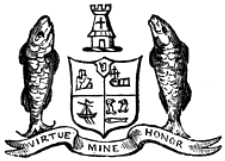
Sir Fitzroy was commissioned an Ensign5 in the 29th Regiment of Foot3 on the 24th of September in 1787.2 Within a year he purchased a commission as a Lieutenant,7 and exchanged to the 4th Battalion21 of the 60th Regiment of Foot, and was on his way to the West Indies.20
American Revolutionary War
From 1775 through 1783 the British colonies in North America struggled to separate from the British Empire, and declared their independence in 1776. The newly formed United States of America quickly allied with France who were also in the mist of its own revolution. Britain desperately wanted to prevent France from being able to supply the American Colonies from the West Indies, while the French wanted to extend their revolutionary concepts of self-rule to the New World. Britain would continue to attempt to regain control of North America until the conclusion of the War of 1812. It was in this international climate that Sir Fitzroy entered military service.
French Revolutionary Wars
For the decade after the French Revolution the National Convention, the government of the first French Republic, sought to defend and spread its revolutionary ideals through both aggressive diplomacy and military action. France was successful in expanding its empire from the Italian Peninsula and the Low Countries of Europe to the Louisiana Territory in North America. These wars, collectively remembered as the French Revolutionary Wars, ended with the signing of the Treaty of Amiens in 1804 shortly after Napoleon Bonaparte seized power.
By the 1790’s roughly four-fifths of all British overseas capital investments were tied to the West Indies.22 Though the primary source of wealth in the British West Indies colonies was sugar, other small crops such as indigo and coffee were also significant.22 The taxes and duties directly from these exports provided approximately one-eighth of the British Government’s £31.5 million annual revenue, not including the additional indirect taxes generated by commercial trade activity once the West Indies goods had been imported. When Britain felt the threat of French expansion reach the West Indies to its neighboring colonies, it took steps to protect its investments in the region. Britain sent 93 Line Infantry regiments to overwhelm enemy colonies in the West Indies.22
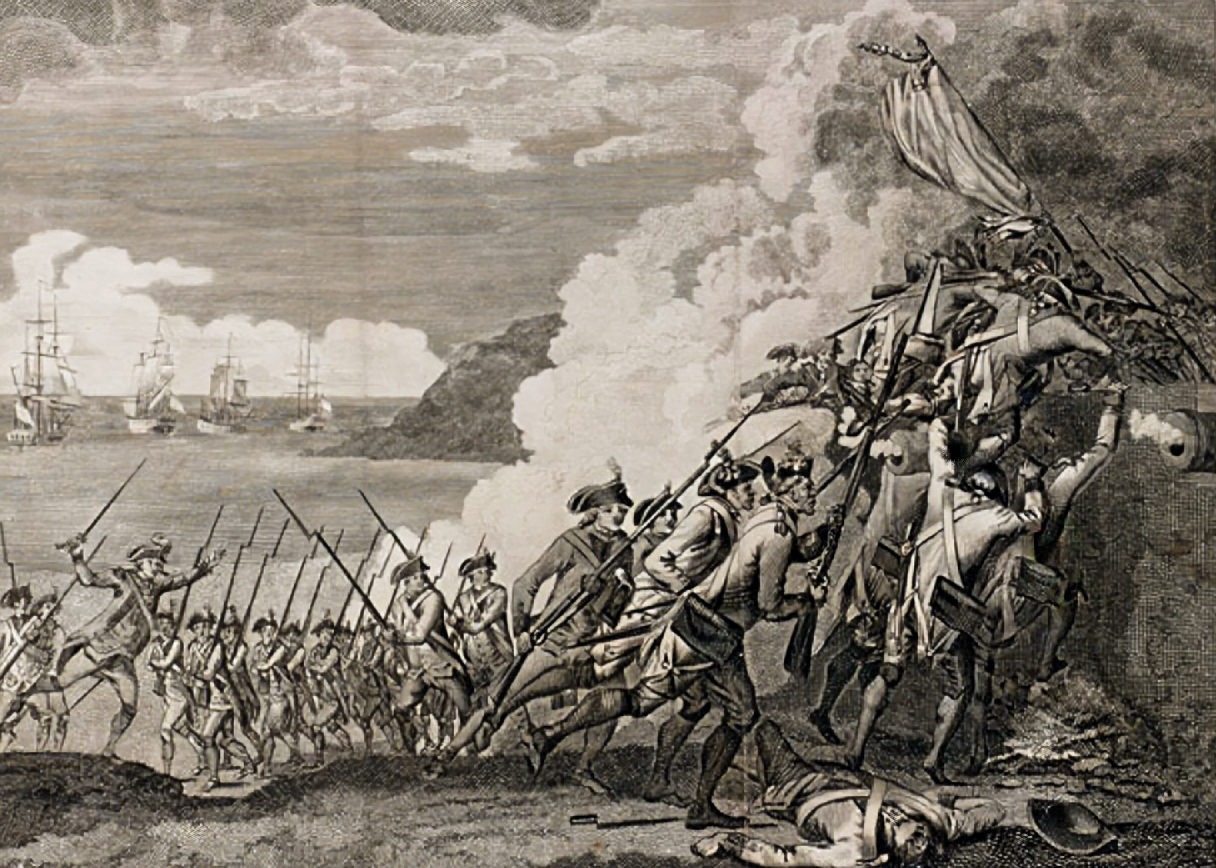
In 1793 Sir Fitzroy commanded a company in the 60th Regiment of Foot3 that took part in the capture of the Island of Tobago1 from the French on April 15th in 1793.22 On September 3rd of the same year, Sir Fitzroy was given a brevet promotion to captain in the same regiment.23 From Tobago, the British set their sights on driving the French off the Island of Martinique. After nearly two months of intense fighting, the French surrendered the island on the 23rd of March in 1794.22
Immediately following the capture of Martinique, Sir Fitzroy was entrusted with the command of the island;24 he was promoted to major and transferred to the 110th Regiment of Foot;3 the regiment disbanded and on July 21st of 1795 and Sir Fitzroy exchanged to the 79th Regiment of Foot.24 Four months later he purchased a commission as lieutenant colonel with the 82nd Regiment of Foot with whom he remained until 180118 when he exchanged back to the 60th Regiment of Foot.3 During the British Occupation, he briefly visited the Island of St Vincent.24
In 1802 the French Revolutionary Wars came to and end with the Treat of Amiens. The peace proved fragile and lasted only a year. Though the West Indies had essentially been restored, the struggle to control colonial resources resumed.

Napoleonic Wars
On the 9th of November, 1799, Napoleon Bonaparte seized power in France. Shortly thereafter began an aggressive series of wars to expand the French Republic, and later the French Empire across the globe. Napoleon undermined the neutrality of Malta, which Britain felt was an essential port due to its central location in the Mediterranean Sea. When Britain demanded the withdraw of French troops from the Dutch Republic and a new agreement to keep a British military presence in Malta, France refused. The United Kingdom declared war on the French Republic on the 18th of May in 1803.25
In response to French disregard for the terms of the Treaty of Amiens, Britain sought to make it’s presence felt in the the Guianas and limit the French footprint on the South American continent. To this end Britain sent an expedition to capture Surinam, a Dutch colony protected by a sizable garrison of Batavian troops.
Sir Fitzroy participated in the Surinam Expedition.1 Admiral Samuel Hood commanded the ships of the British Fleet and overall operation, while General Sir Charles Green commanded the British Army invading the mainland.3 Under Green’s command Sir Fitzroy, having been awarded the brevet rank of colonel on the 25th of September 1803,18 commanded the advance infantry corps that composed the flank companies24 in the Battle of Surinam.2
On the 5th of May in 1804, Surinam’s defenses fell to the British Expeditionary Force.26 The colony and a sizable flotilla were captured; among the ships was an 18-gun26 British corvette27 named the HMS Surinam.28 that had been captured with her 39-man crew a year earlier. The capture of Surinam doubled Britain’s interest in The Guianas, and captured territory that bordered half of French Guiana.
Sir Fitzroy was given command of the Batavian troops who were received into the British service upon the surrender of Surinam and other Dutch West Indies colonies in the region.3 The capture of Surinam was so significant that on March 1808 the Crown awarded a prize of £32,000 to those who participated in the battle.28
The month after the capture of Surinam, Sir Fitzroy was promoted to colonel on the 30th of June in 180429 and given command of the 37th Regiment of Foot.18 Seven months later, January 12th of 1805, he was given a brevet promotion to brigadier while still in West Indies.2 Sir Fitzroy served under General Boyer,3 who’s successful campaign to re-take of the Dutch West Indies islands of Saint Thomas,2 Saint John,24 and Saint Croix25 ended in December of 1807.2 By the Crown’s commission, the government of islands of Saint Thomas and Saint John were conferred upon Sir Fitzroy in 1808.3 Beginning in 1807 the British sought end the transatlantic slave trade, as governor of these West Indies islands he would have played a role. Sir Fitzroy continued as Governor General30 of Saint Thomas and Saint John until they were returned to Dutch in 1815.1
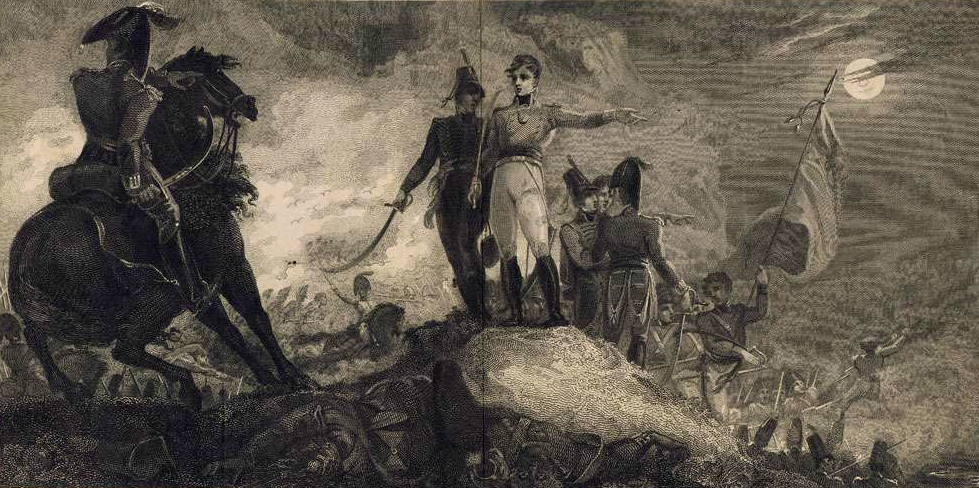
By 1809, the only remaining French foothold in the Americas was the Island of Guadeloupe. The French used the island to resupply privateers who preyed on British trade routes. Britain began the Invasion of Guadeloupe on the 28th of January, 1810, and within 10 days the French surrendered the island.22 Sir Fitzroy participated in the invasion,24 which was led by Gen Sir George Beckwith.3 The successful campaign drove the French out of the West Indies for the duration of the war. Sir Fitzroy was awarded the Military General Service Medal with clasp for Guadeloupe.20
With the West Indies firmly under British control, Sir Fitzroy returned to the business of governing Saint Thomas and Saint John. While Governor General Sir Fitzroy was promoted twice, to major general on July 25th of 18107 and to lieutenant general on June 4th of 1814.3 Sir Fitzroy’s administration of these islands was marked not only by impartial judgement1 but more so by a kind disposition to all people regardless of rank, class, or status.3 He is warmly remembered for working tirelessly to improve living conditions and happiness of all those who lived on the islands, especially those of humbler means.2 When the Treaty of Paris returned the islands to Denmark on November 20th of 1815,2 the islanders expressed their great appreciation to him for his kindness, generosity, fairness, and philanthropic policies as they bid him farewell.3
War of 1812
Though he never set foot on the North American continent, Sir Fitzroy’s service in the West Indies played an important role in Britain’s war with its former American Colonies by protecting supply routes from Britain and denying supporting territory to Spain. The British territory gained in the West Indies also influenced what was left of the French army to remain out of the war.
Post-War Service
After twenty-eight years1 of active service in the hot climate of the West Indies,3 Sir Fitzroy returned to Great Britain in 1815.20 The wars that kept Europe in turmoil for three decades were over and there was peace at home. The wars Britain fought during the later half of Sir Fitzroy’s career were small and abroad ensuring he would never again need to deploy. Sir Fitzroy made his home in London1 at Cadogan Place,3 where he remained the rest of his life.20
Sir Fitzroy was appointed Colonel of the 84th Regiment of Foot9 on the 28th of July in 1823.7 A coveted appointment that allows senior-ranking officers to continue their military careers into retirement, Colonels of the Regiment are usually retired generals who work closely with a regiment and its regimental association in the interests of the regiment, while also maintaining communication with the monarchy for the regiment. Colonel of the Regiment is an office, as such the term, colonel, has no bearing on the office holder’s actual rank. On the 10th of January in 183724 Sir Fitzroy was promoted to the rank of General.3 In late December of 1840 Sir Fitzroy was appointed Colonel of the 45th Regiment of Foot.31
On the 5th of July in 184720 Sir Fitzroy died peacefully at Cadogan Place, his home in London.2 During his 77 years he fought in three wars, traveled to two continents and all the islands of the West Indies, and attained the highest rank in the British Army. Upon his death, the chiefship and baronetcy fell to his eldest son, Sir Charles Fitzroy Maclean.24

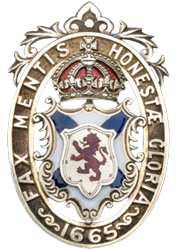
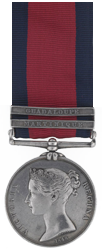
References
* Lord Maclean of the Jacobite Peerage
- Maclean, J. P. A History of the Clan MacLean from Its First Settlement at Duard Castle, in the Isle of Mull, to the Present Period. Cincinnati: R. Clarke, 1889. Print. p230-231. ↩︎
- The Annual Register, Or, A View of the History and Politics of the Year 1847. Vol. 89. London: J.G. & F. Rivington, 1848. Print. Appendix to Chronicle p241. ↩︎
- Gentleman’s Magazine. Vol. 29. London: John Bowyer Nicholas and Son, 1848. p84. ↩︎
- “F J G MacLean Brother 17th February 1845.” The Celtic Lodge of Edinburgh and Leith 291. N.p., 07 Sept. 2011. Web. 18 Feb. 2015. ↩︎
- “Issue 12924.” The London Gazette 25 Sep. 1787: 448. Print. ↩︎
- “Issue 13002.” The London Gazette 24 June 1788: 306. Print. ↩︎
- “Issue 13034.” The London Gazette 14 Oct. 1788: 497. Print. ↩︎
- “Issue 13566.” The London Gazette 03 Sep. 1793: 758. Print. ↩︎
- “Issue 13758.” The London Gazette 03 Mar. 1795: 223. Print. ↩︎
- “Issue 13798.” The London Gazette 21 July. 1795: 767. Print. ↩︎
- “Issue 13833.” The London Gazette 17 Nov. 1795: 1225. Print. ↩︎
- “Issue 15335.” The London Gazette 07 Feb. 1801: 162. Print. ↩︎
- “Issue 15624.” The London Gazette 27 Sep. 1803: 1318. Print. ↩︎
- “Issue 15774.” The London Gazette 22 Jan. 1805: 111. Print. ↩︎
- “Issue 16390.” The London Gazette 24 July. 1810: 1093. Print. ↩︎
- (formerly 27)Issue 16906.” The London Gazette 07 June 1814: 1180. Print. ↩︎
- “Issue 19456.” The London Gazette 10 Jan. 1837: 63. Print. ↩︎
- Brown, Steve. “37th Regiment of Foot.” British Regiments and the Men Who Led Them 1793-1815. The Napoleon Series, Nov. 2013. Web. 21 Feb. 2015. ↩︎
- (Issue 19937.” The London Gazette 05 Jan 1840: 37. Print. ↩︎
- Mclean, A. Sinclair. The Clan Gillean. Haszard and Moore: Charlottetown, 1899. Print 471. ↩︎
- Wallace, Nesbit Willoughby. A Regimental Chronical and List of Officers of The 60th or King’s Royal Rifle Corps, formerly the 62nd or the Royal American Regiment of Foot. London: Harrison, 1789. ↩︎
- Chartrand, Rene. British Forces in the West Indies 1793-1815. London: Osprey Publishing, 1996. p3-7,38. ↩︎
- “Issue 13798.” The London Gazette 21 July. 1795: 767. Print. ↩︎
- The United Service Magazine, Volume 54. ↩︎
- Black, Jeremy. Britain As A Military Power, 1688-1815. New York: Routledge, 1999. p247-252. ↩︎
- Verhandelingen en Berigten Betrekkelijk het Zeewegen, Zeevaartkunde, de Hydrographie, de Koloniën Volume 12. Amsterdam: Hulst Van Keulen, 1852. ↩︎
- Winfield, Rif. British Warships in the Age of Sail 1793–1817: Design, Construction, Careers and Fates. Seaforth, 2008. ↩︎
- “Issue 16121.” The London Gazette 20 Feb 1808: 273-274. Print. ↩︎
- “Issue 15624.” The London Gazette 27 Sep. 1803: 1318. Print. ↩︎
- Hoey, Brian. MacLean of Duart: The Biography of ‘Chips’ Maclean. Twickenham: Country Life, 1986. Print. 169. ↩︎
- “Issue 19937.” The London Gazette 05 Jan 1840: 37. Print. ↩︎
Article updated 2015 FEB 21

